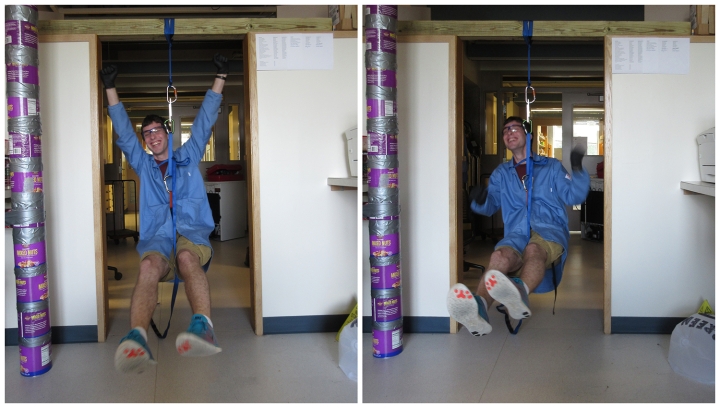Temporary glues may not steal headlines, but they can make everyday life easier.
Sticky office notes, bandage strips, and painter’s tape are all examples of adhesives that can be removed with relative ease. There’s only one drawback: To release any of those glues, the surfaces need to be pulled apart.
Dartmouth researchers have discovered a class of molecular materials that can be used to make temporary adhesives that don’t require force for removal. These nonpermanent glues won’t be available as home or office supplies, but they can lead to new manufacturing techniques and pharmaceutical design.
“This temporary adhesive works in an entirely different way than other adhesives,” says Katherine Mirica, an assistant professor of chemistry. “This innovation will unlock new manufacturing strategies where on-demand release from adhesion is required.”
The research focuses on molecular solids, a special class of adhesive materials that exist as crystals. The molecules in the structures are sublimable, meaning that they shift directly from a solid to a gas without passing through a liquid phase.
The ability to bypass the liquid phase is the key to the new type of temporary adhesives. The adhesive sticks as a solid but then turns to a vapor and releases once it is heated in a vacuum environment. There is no need for mechanical force.
According to the research, which was published in the academic journal Chemistry of Materials, the class of molecules that can be used to make these new-generation materials is wider than previously thought.
“We’ve expanded the list of molecules that can be used as temporary adhesives,” says Nicholas Blelloch, Guarini ’21, the lead author of the paper. “Identifying more materials to work with is important because it offers expanded design strategies for bonding surfaces together.”
The research team says that the temporary adhesives can be useful in technical applications such as semiconductor manufacturing, where the need for strong holding power and easy debonding is essential.
David Hirsch can be reached at david.s.hirsch@dartmouth.edu

